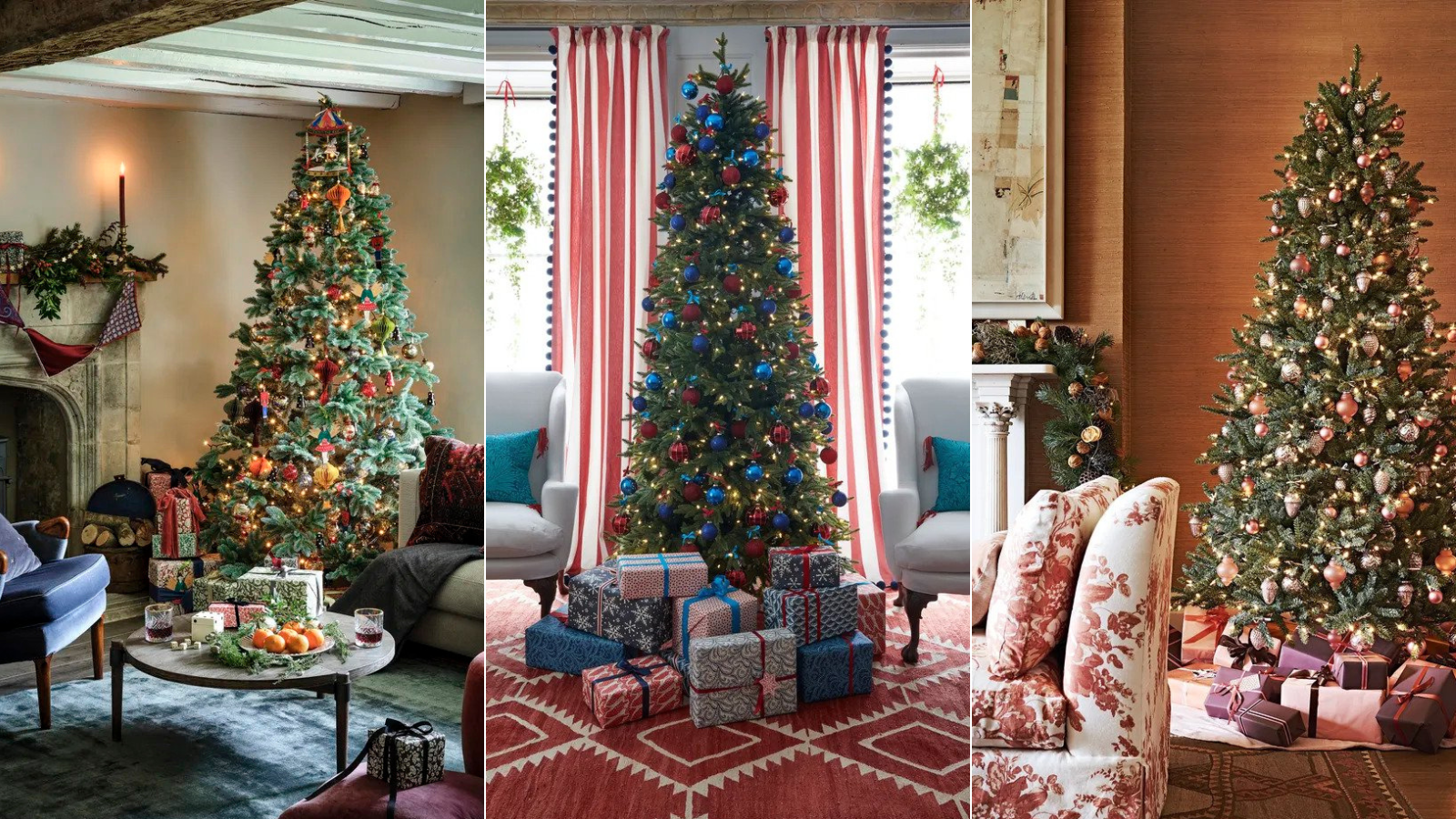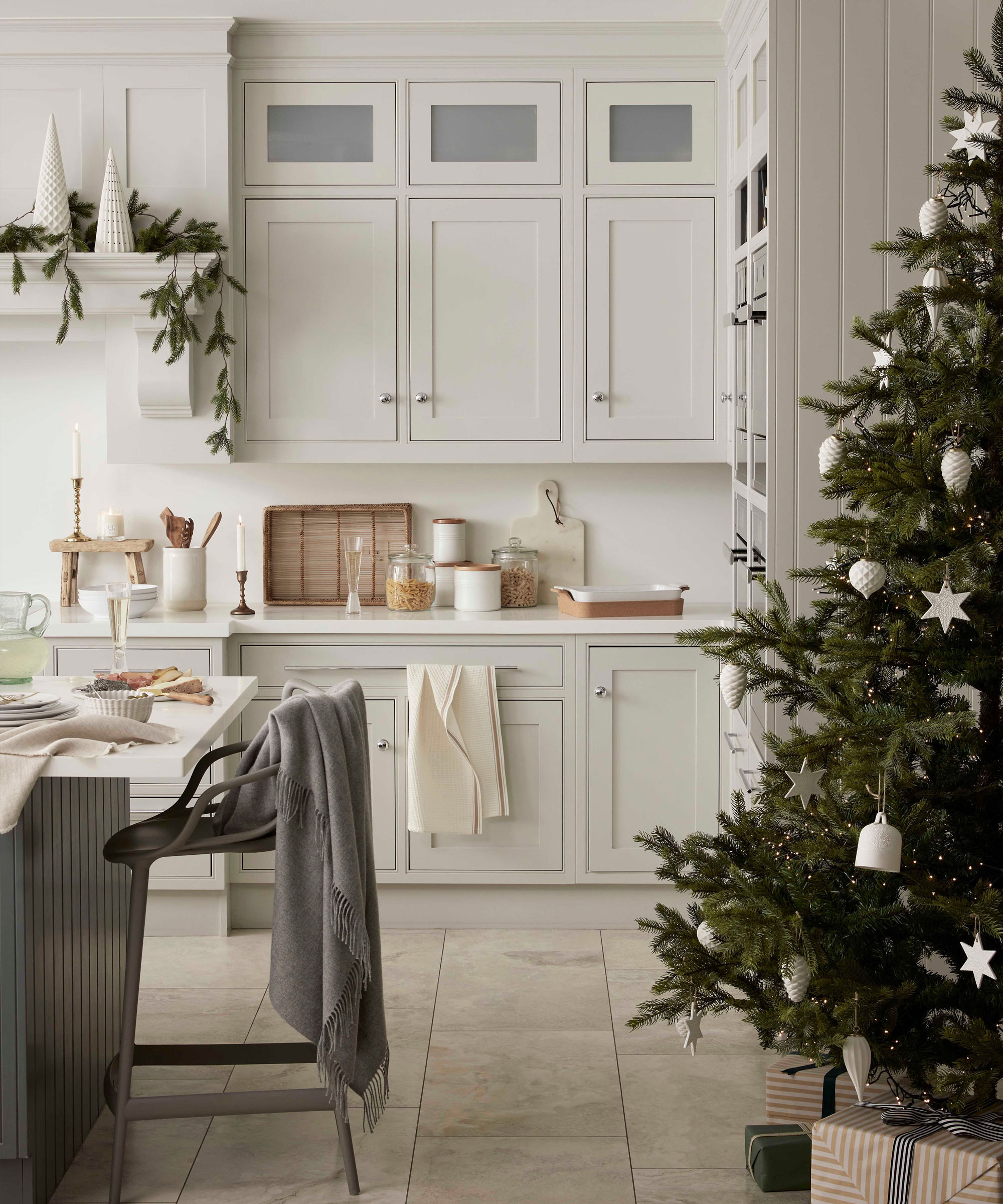5 artificial Christmas tree buying mistakes to avoid, according to the experts
Buy well, buy once – with tips from interiors experts who know how to make faux trees look like the real thing


Shopping for the best faux Christmas tree for your living room can feel overwhelming, given just how much choice there is. And the chances are you're on a tight deadline.
To make things easier, we have rounded up the Christmas tree-buying mistakes to avoid. It's also a great idea to read up on the best places to buy artificial Christmas trees to ensure you are purchasing yours from a reputable company.
From forgetting branch density to choosing a tree that's awkward to assemble, here are the mistakes to swerve.
Artificial Christmas tree buying mistakes to avoid
Knowing just what to look for when buying a Christmas tree will help you pick the perfect option, ensuring the annual tradition of decorating the tree is a joy, not a headache.

1. Not checking tip count
Tip count is essentially how many needles the tree has – and the more needles, the more realistic it will be. You'll find this detail in the product description.
'Forgetting to check could leave you with a tree that looks too sparse. One way to fix this is to use tree flocking powder, at Amazon, to cover the branches in a layer of artificial snow,' says Homes & Gardens content editor Zara Stacey.
'I have a 6-ft artificial Christmas tree with a tip count of 686 and find that once I have fluffed the branches, pulling them outwards and upwards, it looks full. It might not pass as the real thing, but this tip count works fine for me.'
Design expertise in your inbox – from inspiring decorating ideas and beautiful celebrity homes to practical gardening advice and shopping round-ups.
If it's important for you to make the tree look as realistic as possible, aim for between 800 and 900 tips, as long as you are willing to pay more. Also, you can find out how to make a Christmas tree look fuller – there are all kinds of ways to make the most of the tip count you have.

Zara joined Homes & Gardens in February 2022 as a Content Editor. After studying English Literature at University, she worked as an Ecommerce Website Editor, Content Writer and Buying Intern at multiple independent businesses within the luxury retail and lifestyle sectors. Her role at Homes & Gardens unites her love, experience and passion for the world of design and desire to create inspiring written content.
2. Choosing the wrong size

Search interest in 8-foot trees suggests we're going bigger than ever with our festive decorations, and while it might sound obvious, make sure you measure carefully rather than playing guesswork. Use a tape measure, at Amazon, to measure out the maximum width and height that you can fit in the space. Don't forget to factor in the height of your Christmas tree topper, too, or the tree will look squashed.
'A 6-foot or 7-foot tree will be appropriate in most living rooms, and if you have high ceilings, why not go higher for a dramatic impression?' suggests Zara.
If in doubt, consider a smaller tabletop version, which may be a better option if you often go away for the holidays, as a smaller tree will be easier to store for the rest of the year, is quicker to assemble and reassemble, and still means you can have a festive focal point in your home without the commitment.
3. Buying one that's hard to assemble

Take the time to read the assembly instructions, and opt for one that will be easy to build. For example, a pre-lit model with three hinged sections or 'pop up' design will be easy to put together. As with anything, you get what you pay for, and choosing the highest quality you can afford will mean you are less likely to end up with a tree that won't stand up straight.
4. Forgetting the collar
No artificial Christmas tree should be without a tree stand or collar. There are various options out there to help you create a backdrop for gifts under the tree. For a textural look with natural tones, choose a rattan tree collar, at Wayfair. If you are shopping for Christmas decorating ideas with a farmhouse theme in mind, consider this white wooden box design, also at Wayfair to form the base of your tree.
5. Not checking branch type and density
When it comes to choosing your faux, Alick Burnett, Blooming Artificial’s managing director, recommends looking out for the density or fullness of a tree, as this affects how many branches it has, how many decorations it can hold, and how realistic it will look.
'With so many to choose from, finding the right artificial Christmas tree can be tough. Make sure to check the branch type. Some come permanently fixed into place, and while they tend to be slightly more affordable, it's worth going for a tree with adjustable branches that can be moved around to get your desired look.'
FAQs
Is an artificial tree better for pets?
'Faux trees are an extra win for those with pets,' comment Pet MD, 'avoiding the myriad of dangers that come with real pine trees. The oils of real needles can cause gastrointestinal upset and irritation to both cats and dogs, while drinking the water may result in even more serious issues.'
If opting for a real tree, Pet MD recommends setting it up in a place your pets can’t easily access.
Bear in mind that slim, 'pencil' Christmas trees can be a great option as they will tuck into a corner. If you go for a tall tree, it will still make a statement without taking up lots of floor space.

Millie is a freelance writer and qualified interior designer based in Sheffield. She has many years of experience in the world of content and marketing, and previously worked as the head of Solved at Homes & Gardens. Before that, she worked in SEO at News UK in London and New York. She has a first-class degree in French and Italian from UCL and loves to weave decor into her home that reminds her of time spent living and studying in Bologna. Millie believes a clutter-free space that you love coming home every day is the best secret weapon for our well-being.